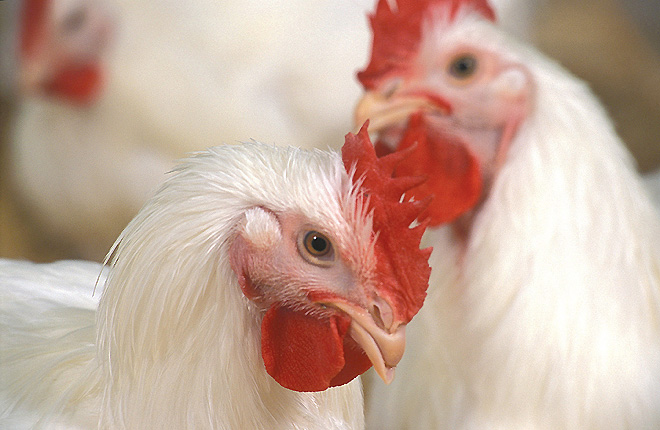Lighting is Key in Poultry Health
Light plays a crucial role in the health and well-being of birds and their production performance. It greatly influences activity, growth and development, and physiological functioning in growing broiler chickens.
Altering light in a bird’s environment influences the onset of several eye conditions, including avian glaucoma and avian macrophthalmos. In addition, birds exposed to continuous light can develop other serious health issues including leg disorders and stress, which can ultimately lead to premature death, says Hammed A. Olanrewaju, an animal scientist at the Agricultural Research Service (ARS) Poultry Unit in Mississippi State, Mississippi.
“The poultry industry has made progress in improving genetics and nutrition in birds, along with changes in environmental management,” Olanrewaju says. “But the effects of lighting on vision, general health, and well-being of broilers grown to market weight need further investigation.”
Proper light management reduces the incidence of many preventable metabolic, skeletal, and skin disorders. It can also prevent aggression between birds. Therefore, strategically altering “photoperiods” (the amount of time between light and dark cycles) and light intensity can be used to improve poultry production and enhance animal welfare.
Olanrewaju and his colleagues evaluated the effects of different photoperiods and light intensities on eye and general health of broiler chickens grown to heavy weights. Chicks were randomly placed into groups and then exposed to three photoperiod treatments: long/continuous (23 hours of light followed by 1 hour of dark within a 24-hour interval); regular/intermittent (2 hours of light followed by 2 hours of dark, repeated in succession throughout a 24-hour period); and short/non-intermittent cycle (8 hours of light followed by 16 hours of dark).
Chickens subjected to a short/non-intermittent photoperiod had the lowest body weight, body weight gain, feed intake, carcass weight, and fillet and tender weights when compared with those reared under long/continuous and regular/intermittent photoperiods.
Birds also were exposed to incandescent lighting, which is standard in U.S. commercial broiler housing, in a controlled environment at varying light intensities of 10 lx, 5.0 lx, or 0.5 lx.Lux (lx) is a measurement of light.
Footpad lesions, lameness, and paralysis have often been associated with improper light management. In this study, findings indicated that a short/non-intermittent photoperiod had a negative effect on footpad condition. In addition, scientists were able to demonstrate that a low-light environment reduced energy usage and production costs by decreasing hyperactivity and pecking damage in the birds.
“The slightly faster growth rate and small improvement in feed conversion efficiency of birds reared under the regular-intermittent photoperiod has the added advantage of reducing annual feed costs,” Olanrewaju says. “Regular-intermittent photoperiods combined with 5 lx lighting programs are recommended for optimal welfare and production.”—By Sandra Avant, ARS Office of Communications.
“Lighting is Key in Poultry Health” was published in the May 2016 issue of AgResearch Magazine.
Key Facts
- Light management is very important in poultry production.
- Proper lighting reduces costs and improves birds’ welfare.
- A low-light environment decreases pecking damage.
Full Story







